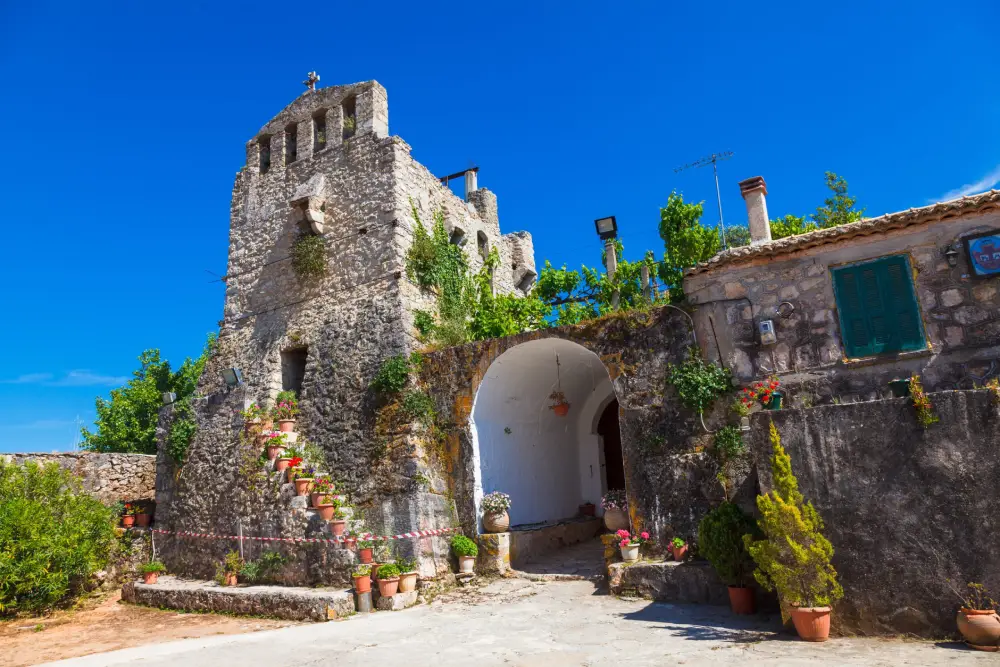Sights
The most famous landmark of the island is the Navagio beach. It is a cove on the northwest shore, isolated by high cliffs and accessible only by boat. The beach and sea floor are made of white pebbles, and surrounded by turquoise waters. It is named after a shipwreck , which sunk on the shore around 1980. The ridge area from Anafonitria has a small observation deck which overlooks the shipwreck, and there is a monastery nearby. The unique and stunning visuals of the location are a favourite for BASE jumpers, and each year a major event in the BASE calendar is held at Navagio, around the end of August.
Numerous natural “Blue Caves”, are cut into cliffs around Cape Skinari, and accessible only by small boats. Sunrays reflect through blue sea water from white stones of cave bottoms and walls, creating visual lighting effects. Keri is located in the far south of the island. It is a mountain village and has a lighthouse in the south. It includes a panorama of the southern part of the Ionian Sea. The whole western shore from Keri to Skinari contains numerous interesting rock formations, including arches.
Northern and eastern shores feature numerous wide sandy beaches, some of which attract tourists in summer months. The largest resort is Laganas, whose beach stretches around 10 kilometres (6 miles). Small Xigia beach in the north is noted for its underwater springs rich in sulphur, giving a distinct odour. Marathonissi islet (also known as “Turtle Island”) near Limni Keriou contains tropical vegetation, turquoise waters, beaches, and sea caves. Bochali hill above the Zakynthos town contains a small Venetian castle and offers panoramic views of the town. Located next to Bochali, Strani hill is the place where Dionysios Solomos wrote the Greek national anthem.

